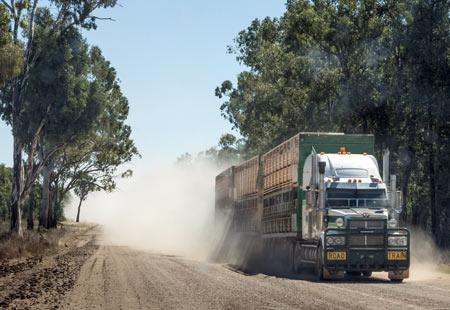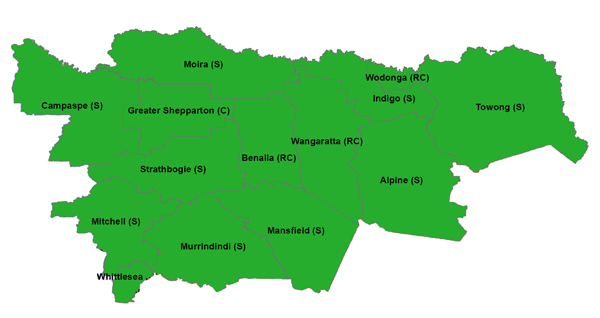 Regional Round-up is a monthly newsletter providing an overview into the environmental and business conditions affecting farmers and rural businesses in the Goulburn Valley and North East Victoria.
Regional Round-up is a monthly newsletter providing an overview into the environmental and business conditions affecting farmers and rural businesses in the Goulburn Valley and North East Victoria.Dairy
Milk prices from all local companies have dropped from the previous financial year.
Good rains have seen an increase in confidence and availability of allocation seems assured, with water prices starting below last year. Many farm budgets indicate a deteriorating cash result for the next 12 months with an anticipated growing levels of unpaid creditors. On farm wet weather is making conditions difficult with muddy yards, tracks and paddocks; in addition to having a detrimental impact on milk quality.
Pricing update:
Milk price outlook is $3.80 - $5.60/kg MS dependant on individual circumstances (Murray Dairy). The Global Dairy trade index rose 6.6% on 2/8/16 and 12.7% on 16/8/16.
Chopper prices continue to be high and holding, providing some useful income. It is interesting to note that culled cows sold to market is 36% higher than this time last year.
Cropping/Sheep
Consistent rains across the North East have resulted in the best winter for many years. Sheep producers generally are very positive about the upcoming spring, coupled with very good stock prices.
Wheat prices are now at a 10 year low with no positives in sight as Northern Hemisphere growers are currently enjoying excellent growing conditions with a bumper crop expected which will worsen the current glut. High rainfall is now starting to have a significant impact. Some farms have had up to 40% of their crop damaged with the average being about 20% across the region. This is already significant and will worsen if expected high rainfall over coming weeks eventuates.
Lamb meat and wool have again increased for the month to be at almost record levels and it is expected this will ensure most broad acre farmers will have a profitable year despite the grain prices. The hay market is steady at $220-240/t (cereal); $320-350/t (lucerne) and $110-140/t (straw) delivered. The Goulburn and Murray Valley report slow trading and reduced demand due to good pasture availability. Hay production is forecast to be high in volume with quality dependant on spring drying conditions.
With reduced milk pricing, most dairy farmers are not purchasing hay however some are utilising straw to increase effective fibre in rations. Whilst dairy farmers are focusing on grass and fodder production it is expected that silage production will also be a focus during spring (Murray Dairy Hay Report).
Horticulture
Pruning is progressing around the region. Wet weather has caused some delays.
There has been some discussion about whether it has been cold enough for optimum bud set.
Beef
Prices again continue to increase with no letup in sight. Eastern Young Cattle Indicator has now broken through 700c; an all-time record. Demand has been driven mainly by local restockers but with a tight supply of cattle in the north there is a presence of NSW and Qld buyers in local markets.
Irrigation
Good inflows were recorded in August. Storage levels in Lake Eildon are at 59% against 62% last year. The Hume is 97% (against 48% LY) and Dartmouth 60% (against 69% LY). source GMW website.
Low Reliability Water Shares are currently 0% allocation on the Murray and Goulburn systems. The Murray system irrigators have a 61% allocation for High Reliability Water Shares (HRWS) and Goulburn irrigators’ 57% allocation for HRWS announced on 1st September.
Water trading is currently averaging $140/ML (Temporary purchase water).
High Reliability water shares have averaged $2600 for August. Low reliability shares traded for $220 in July - August (Refer Vic Water Register).











